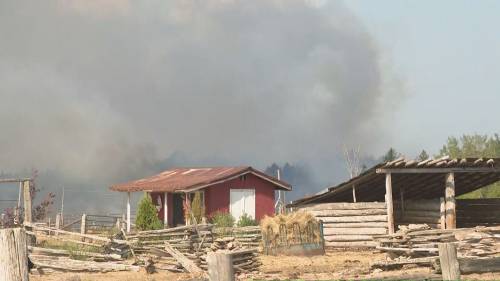Recent rainfall has provided minimal relief to the Kawartha Lakes region as wildfires continue to burn across central Ontario, challenging firefighting crews and threatening local communities. The precipitation, while welcomed by exhausted emergency responders, has fallen short of the substantial downpour needed to significantly impact the fires that have scorched hundreds of hectares of wilderness.
“What we’ve received is merely a drop in the bucket compared to what’s required,” explained Fire Chief Morgan Davidson in an interview yesterday. “The ground was so parched that much of the rainfall was quickly absorbed, leaving deeper layers of vegetation still dangerously dry and combustible.”
The Ministry of Natural Resources and Forestry has classified three of the active fires as “not under control” despite around-the-clock suppression efforts. These blazes, primarily located in the northern reaches of the municipality, have forced the evacuation of over 150 residences since they began last week during an unprecedented early summer heatwave.
Local authorities are particularly concerned about shifting wind patterns forecast for the coming days. Meteorologists from Environment Canada predict gusts reaching 30 km/h by Thursday, potentially driving flames toward more densely populated areas that have thus far been spared.
“We’re dealing with a moving target,” noted Emergency Response Coordinator Samantha Wells. “The rain offered a brief window to strengthen our containment lines, but we’re bracing for challenging conditions ahead as these winds could easily push the fires in unpredictable directions.”
Air quality remains a significant concern for communities throughout the region, with particulate matter readings consistently exceeding healthy thresholds. Health officials have advised vulnerable residents, including those with respiratory conditions, young children, and the elderly, to remain indoors with windows closed when possible.
The economic impact is also mounting as the tourist season approaches. Resorts and seasonal businesses that typically thrive during early summer are reporting widespread cancellations, creating financial uncertainty in a region already dealing with the physical destruction of natural resources.
Provincial resources have been mobilized, including water bombers and specialized firefighting units from neighboring jurisdictions. However, with multiple wildfires burning across Ontario, resources remain stretched thin as the province grapples with what forestry experts describe as increasingly concerning fire seasons attributed to climate change patterns.
Community response has been robust, with evacuation centers reporting an overwhelming number of volunteers and donations. “The silver lining in all this has been witnessing how people come together in crisis,” said Red Cross coordinator Thomas Berg. “We’ve had to actually turn away donated supplies because the response has been so generous.”
As firefighters continue their battle against these persistent blazes, the question increasingly on residents’ minds is whether this early and intense start to wildfire season represents a new normal for the region, and what long-term preparedness might look like in a changing climate.










